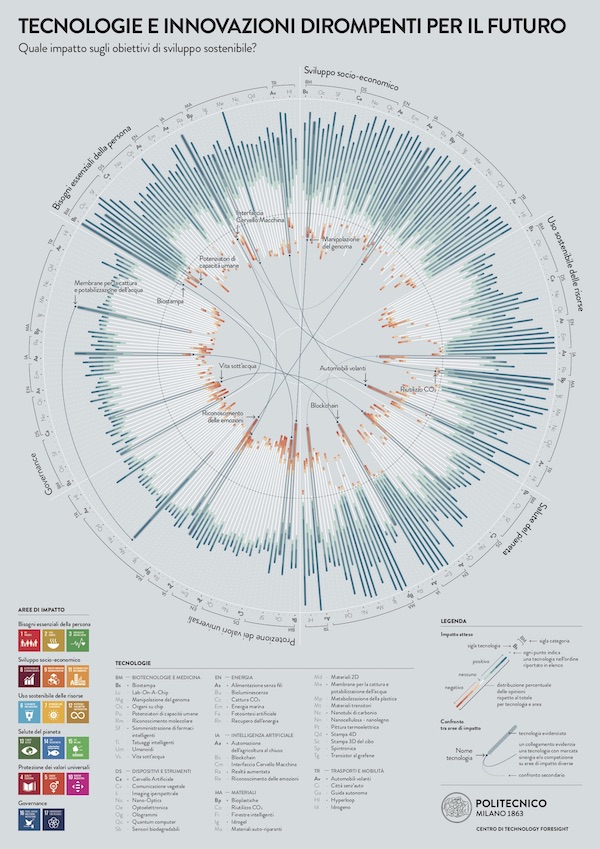Quale impatto potranno avere queste tecnologie e innovazioni tecnologiche identificate come dirompenti nei prossimi 10-20 anni sugli obiettivi di sviluppo sostenibile?
Questa la domanda rivolta alla comunità politecnica estesa in una prima esperienza di Technology Foresight, la cui risposta è sintetizzata e raffigurata in una mappa.
50 sono le tecnologie e innovazioni tecnologiche oggetto del sondaggio, risultato di un processo di aggregazione e selezione da un insieme molto ampio di elementi frutto di studi di foresight realizzati da riconosciute istituzioni europee, quali gli studi del Fraunhofer Institute, dell’Imperial College e la lista di innovazioni emergenti identificate dalla Commissione Europea nel 2019. Il processo ha fatto riferimento alle linee guida predisposte dall’United Nations Industrial Development Organization, adottando il criterio di avere un numero congruo ma non eccessivo di elementi, privilegiando le innovazioni tecnologiche rispetto a quelle sociali.
I 17 SDG sono stati raggruppati in sei aree di impatto, in linea con quanto fatto nel progetto "The World in 2050", per rendere più efficace l’analisi.
La mappa offre una visione d’insieme sulla distribuzione delle opinioni di impatto, per ogni tecnologia ed area di impatto, permettendo di cogliere potenziali sinergie e competizioni rispetto ad aree diverse.
È possibile accedere ai contenuti e risultati del sondaggio a questo link (per utenti autenticati), mentre un commento più dettagliato a quanto emerso è riportato nel booklet realizzato
What impact might these technologies and technological innovations identified as disruptive in the next 10-20 years have on sustainable development goals?
This was the question posed to the extended polytechnic community in an initial Technology Foresight experience, whose answer is summarized and depicted in a map.
50 are the technologies and technological innovations covered by the survey, which is the result of a process of aggregation and selection from a very large set of elements derived from foresight studies carried out by recognized European institutions, such as studies by the Fraunhofer Institute, Imperial College, and the list of emerging innovations identified by the European Commission in 2019. The process made reference to the guidelines prepared by the United Nations Industrial Development Organization, adopting the criterion of having a congruous but not excessive number of elements, favoring technological innovations over social innovations.
The 17 SDGs were grouped into six impact areas, following what was done in the project "The World in 2050", to make the analysis more effective.
The map provides an overview of the distribution of impact views, for each technology and impact area, allowing potential synergies and competitions with respect to different areas to be captured.
You can access the contents and results of the survey at this link (for authenticated users), while a more detailed commentary on the findings can be found in the realized booklet (available in italian language)


